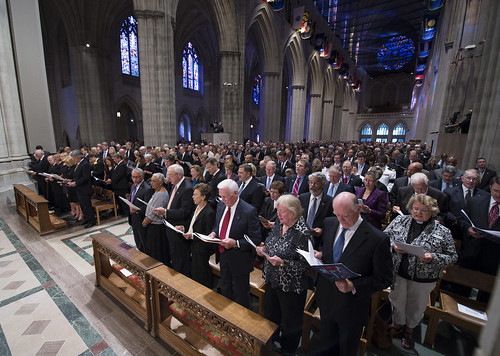Highly recommended reading – two articles on using music in gathered worship by Scott Mackay:
Stating the obvious about church music (Scott Mackay) http://t.co/jTdyK09VAx
— the kiwifruit blog (@kiwifruitblog) March 4, 2013
Deconstructing church singing (Scott Mackay) http://t.co/Pc4yJbWTFp
— the kiwifruit blog (@kiwifruitblog) March 5, 2013
In the first piece, “Stating the Obvious About Church Music“, Scott argues for a shift in thinking from worship music as a distinct and separate part of our gatherings, to using music as one of several ways Christians minister to one another and worship God corporately:
“There is a subtle paradigm shift I believe needs to take place in our thinking. We often treat singing as a distinct activity of corporate worship. This is understandable, especially as the musical ‘event’ occupies quite a distinct space in our church services. Our expectations of musical professionalism are higher post-revolution (the worship music revolution of the mid to late 90’s), and this had led to a tightly defined activity called ‘the music’ which is often quite detached from everything else that happens in a church meeting.”
I think others would date this revolution earlier to the 70’s and the Jesus Movement. The result today is definitely a tightly defined activity called “worship” in most churches.
“I believe we need to primarily think of singing as a particular way of engaging in activities that we also do without the aid of music — activities such as declaring, confessing, praying, praising, etc.”
This paradigm shift can help Christians to guard against falsely elevating the role of music, and to clarify what we are actually doing when we sing.
My own (minor) push-back in this first article would be this comment:
“In this environment, it’s possible to lose sight of a very simple truth about congregational singing: singing… is simply a mode of human speech.”
To say that “singing… is simply a mode of human speech” risks minimising the distinctiveness of singing. Can we say there’s no difference whether you say the words to a hymn, or sing it, or pray it? I’m not sure. I think there is a uniqueness about singing in that this mode engages us emotionally in quite an acute way.
For example, Philip Jensen states:
Music is emotional: be it happiness or sorrow it engages us emotionally (e.g. Psalm 137, James 5:13). Singing gives voice to our emotions. Congregational singing unites us in expressing our common belief by articulating how Christians feel.
The congregational singing throughout the book of Revelation (Rev. 1:5-6, 4:11, 5:9-10, 7:11-12,11:17-18, 15:3-4, 19:6-8) suggest to me that we’ll be doing a lot of singing in the New Creation, and underscores the importance and uniqueness of singing. The Psalms specify song after song to sing of all that God has done – not pray, not catechise (these are brought up in other passages, to be sure). I’m an advocate of using a variety of means to address one another in church, but not in a way that loses the distinctiveness of sung worship.
In the second article, “Deconstructing Church Singing“, Scott gives some practical tips to ensure that “singing and music are simply seen as one means to express praise, devotion, faith, thanksgiving, and prayer”:
1. Recover the devotional use of the Psalms
2. Incorporate singing more seamlessly into services
3. Teach the congregation about singing.
4. Ensure the musical accompaniment supports the singing of the congregation, rather than overwhelming it.
5. Use other means of corporate participation.
6. Change the way we talk about singing in church.
I see all six points as areas where I can personally grow in as I consider leading others in gathered worship.
Both articles would be a helpful read for anyone interested in music, singing and the church.
What are your thoughts?
————————————








